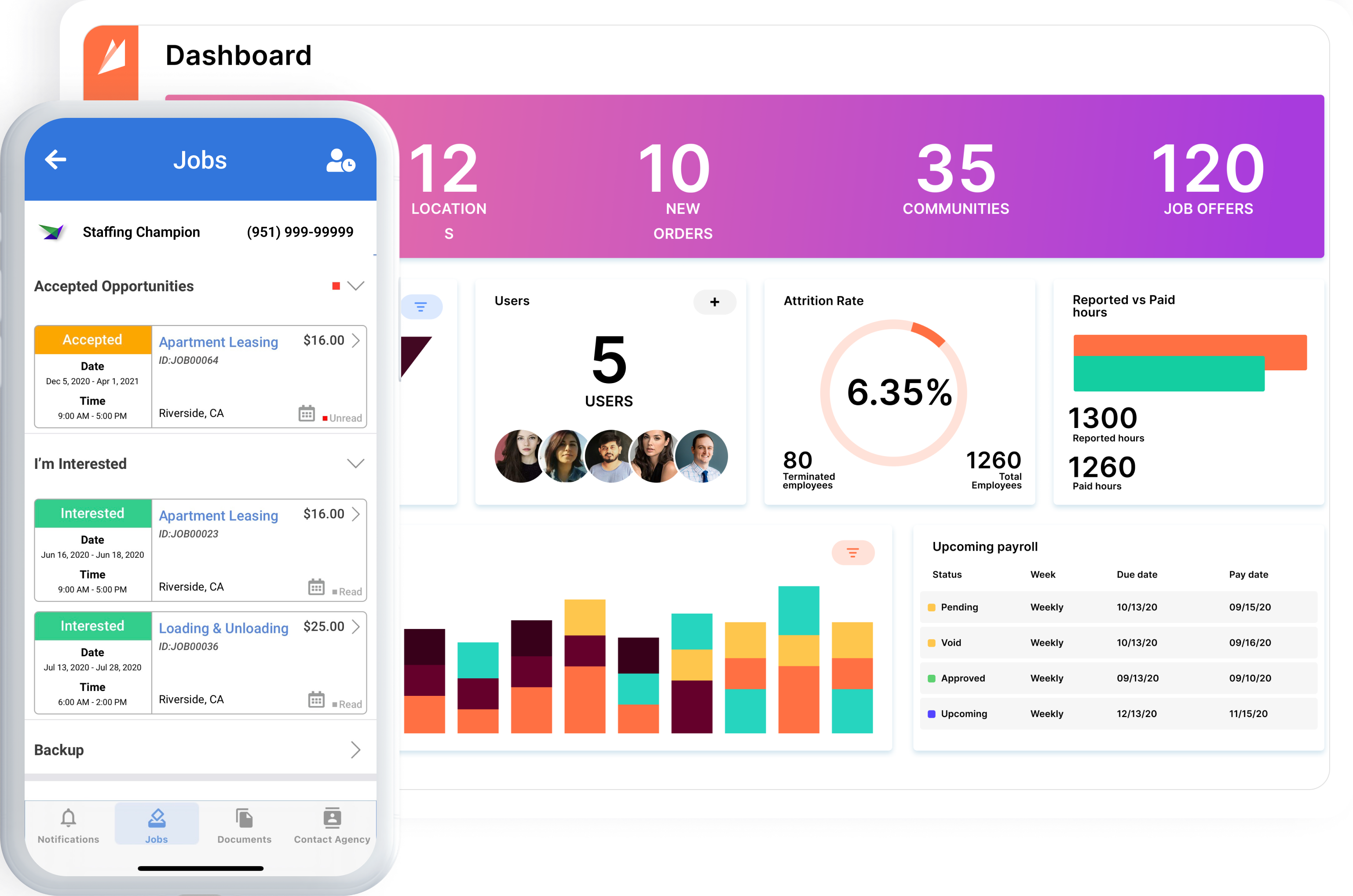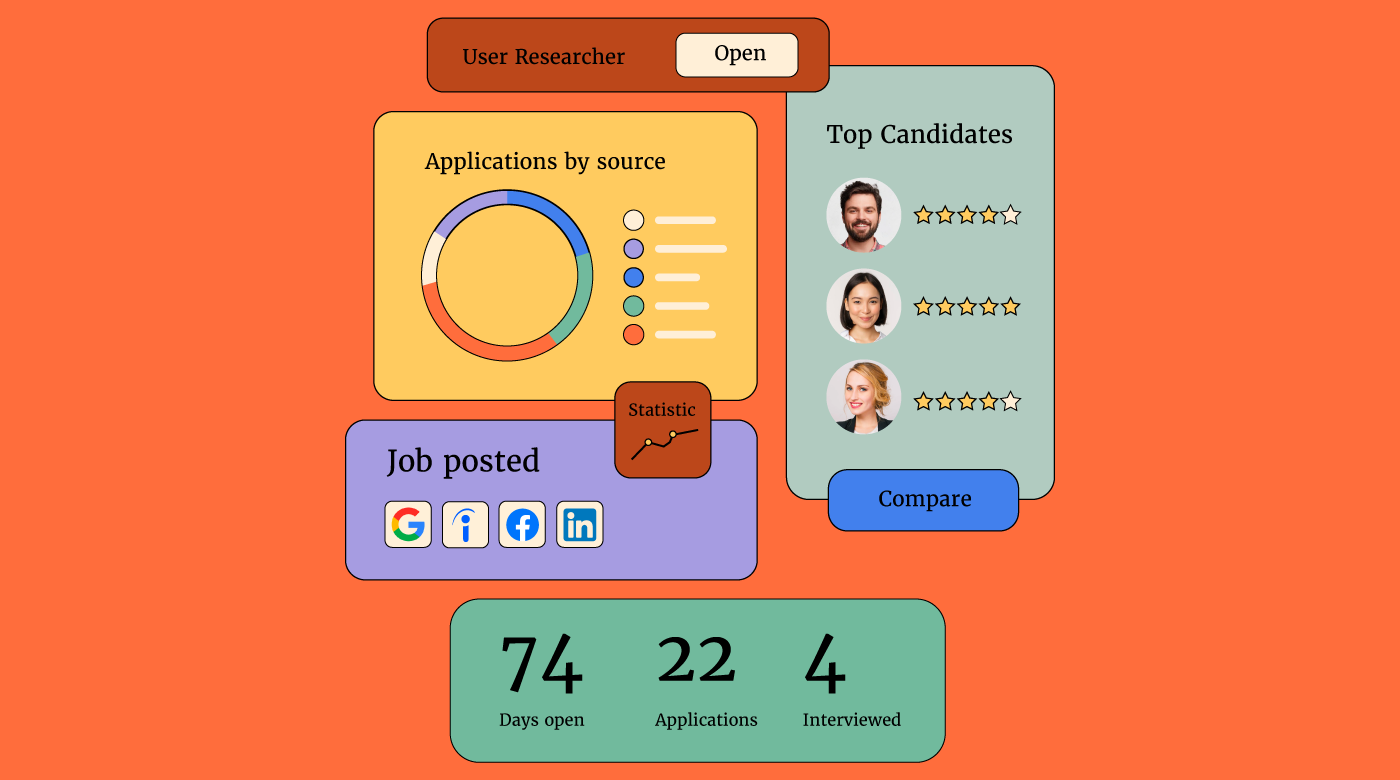Improve Workflow with Advanced Staffing Management Software
Improve Workflow with Advanced Staffing Management Software
Blog Article
Releasing the Power of Information: Enhancing Human Resources Approaches With Cutting-Edge Staffing Monitoring Software Application
In the swiftly advancing landscape of human sources, the application of information has actually come to be a critical force in shaping organizational success. As companies strive to remain nimble and competitive, the integration of cutting-edge staffing monitoring software program attracts attention as a transformative device in improving HR procedures. By using the power of information analytics, organizations can not only improve their recruitment approaches yet likewise optimize employee retention and efficiency. The synergy in between data-driven understandings and advanced technology offers an engaging opportunity for human resources experts to transform their approach in the direction of talent administration.
Importance of Data-Driven HR Methods
Why have data-driven HR methods become necessary in modern-day service procedures? In today's busy and competitive organization environment, companies are progressively relying on data-driven insights to make informed decisions. Data-driven HR methods enable firms to maximize their workforce monitoring, recruitment procedures, and staff member engagement efforts. By analyzing information associated with worker performance, turnover rates, and ability voids, human resources divisions can determine fads, forecast future demands, and develop positive options to resolve difficulties.
Data-driven HR methods also play a crucial role in improving worker satisfaction and retention. With the analysis of worker responses, efficiency testimonials, and training outcomes, human resources experts can customize specific growth strategies, identify high-potential employees, and promote a society of constant understanding and growth within the organization. Moreover, data-driven understandings allow human resources groups to straighten their strategies with the general organization objectives, guaranteeing that skill administration efforts directly contribute to business success.
Benefits of Staffing Monitoring Software Application
Using staffing administration software improves the recruitment and onboarding processes for HR divisions, boosting effectiveness and accuracy in skill procurement. One substantial advantage of this software program is the ability to centralize prospect information, making it easily available for employment groups. By having all candidate information in one location, human resources professionals can effectively track prospect progression, communicate properly with possible hires, and ensure a smooth recruitment experience.
In addition, staffing administration software application usually includes attributes such as resume parsing and key phrase matching, which aid in rapidly determining top prospects that match the work needs. This automation reduces the time invested on hands-on return to evaluating, enabling human resources team to concentrate on more tactical jobs. staffing management software. Furthermore, these systems can integrate with work boards and social media platforms, increasing the reach of task postings and bring in a diverse swimming pool of candidates
Furthermore, analytics and reporting tools within staffing monitoring software application give important insights into employment metrics, such as time-to-fill and cost-per-hire. This data-driven strategy allows HR teams to make enlightened decisions, maximize recruitment methods, and improve total hiring procedures. By leveraging these benefits, organizations can improve their ability purchase efforts, enhance candidate experience, and inevitably construct a strong workforce.
Enhancing Recruitment Procedures With Data
Employing data-driven techniques in employment procedures has actually ended up being significantly important for organizations seeking to improve their ability procurement end results. By leveraging data, firms can make more informed choices throughout the employment lifecycle, ultimately causing better hires and boosted retention rates. One vital way data enhances employment this content procedures is by enhancing task posts based on understandings from previous successful hires. Evaluating metrics such as the resource of top talent, time to fill placements, and prospect high quality can aid employers customize work descriptions to bring in the ideal prospects successfully.
In addition, data analytics can streamline the testing and option procedure by recognizing patterns in prospect credentials and performance indicators. This allows recruiters to concentrate their initiatives on prospects that are more than likely to prosper in the role, conserving time and resources. Furthermore, data-driven recruitment strategies can help in reducing bias in the employing process by giving objective insights right into candidate certifications and possible fit within the organization. Overall, incorporating data into employment processes equips companies to make smarter working with choices and build read this article high-performing teams.
Improving Worker Retention Via Technology

One means innovation can enhance employee retention is via using employee interaction platforms. These systems enable real-time feedback, recognition, and interaction between workers and administration, cultivating a culture of appreciation and support. Furthermore, innovation can enable individualized learning and advancement programs customized to individual staff member requirements and career goals, enhancing work contentment and commitment.
In addition, data analytics devices can help organizations recognize fads and patterns connected to employee turnover, allowing them to take aggressive measures to attend to possible problems prior to they intensify. In general, by leveraging technology successfully, organizations can produce a much more supportive and appealing work environment that urges workers to stay and expand within the business.
Maximizing Workforce Productivity With Information

With the evaluation of information, human resources departments can determine patterns and trends that impact performance levels. As an example, by tracking employee work hours and project conclusion prices, organizations can optimize job timetables to make sure that tasks are effectively dispersed among staff member. Additionally, information can reveal skill voids within the workforce, allowing human resources to carry out targeted training programs that improve worker abilities and general efficiency.
Additionally, data-driven efficiency examinations enable managers to offer certain feedback and assistance to workers, promoting a culture of constant improvement. Generally, leveraging data to maximize workforce productivity is a calculated strategy that empowers companies to attain their objectives effectively and effectively.
Verdict
To conclude, using advanced staffing monitoring software program can substantially enhance HR techniques by leveraging the power of data. By incorporating data-driven recruitment procedures, improving worker retention through technology, and making the most of labor force productivity, organizations can simplify their procedures, make more educated choices, and ultimately attain greater success in managing their human capital. Accepting these technological advancements is essential in the ever-evolving landscape of personnel administration.
Data-driven Human resources techniques make it possible for business to enhance their workforce monitoring, recruitment procedures, and staff member interaction campaigns. By analyzing information associated to employee performance, turnover rates, and ability gaps, HR divisions can determine trends, forecast future demands, and create positive solutions to attend to obstacles.

Report this page